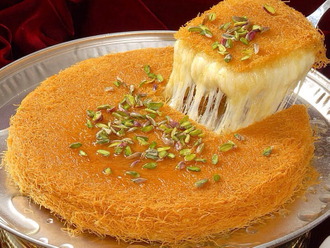Abu Dhabi: For years, Rahima Younis had lived strapped to a bulky machine: it kept her alive by providing her with the supplemental oxygen she needed.
Diagnosed with idiopathic pulmonary fibrosis, a progressive disease that causes extensive scarring of the lungs, Younis, 45, a Palestinian mother of six who has lived in the UAE for more than three decades, was frequently exhausted.
“It all began 11 years ago, when I started to feel my energy levels dip. Any movement became difficult as I felt I was losing my energy and could not breathe properly. I started to visit hospitals, but they couldn’t find anything that was contributing to my condition,” she told Gulf News.
When her condition worsened, she decided to seek medical counsel abroad. In Thailand, she was finally diagnosed with idiopathic pulmonary fibrosis, a condition under which patients are typically given a three- to five-year survival rate after diagnosis, in the absence of transplant surgery.
Younis was worried, and she could tell that her health was in peril when a simple viral infection caused her to be hospitalised for a long while.
“I couldn’t take care of my family because I wasn’t free to move with my oxygen machine. I could not disconnect it for even a minute. Even praying and ablution became very hard,” Younis said.
Her case was finally referred to the Cleveland Clinic Abu Dhabi two years ago, and doctors there found that her lungs were as hard as rocks due to the scarring.
The disease had also affected Younis’ heart, which was not receiving enough oxygenated blood, making it hard for her to even stand for a while. Dr Fadi Hamed, Younis’ pulmonologist, told her she would soon need a double lung transplant.
A match was found
She then underwent a series of tests and also met with transplant coordinators, dieticians, social workers and psychologists. A year passed before she finally received the call that her transplant was scheduled for June 10, 2018. A deceased donor’s lungs had been found to be a good match for Younis’ failing organs.
As reported by Gulf News, the surgery marked the first double-lung transplant in the UAE, and it took the multidisciplinary team five and a half hours. The team was led by Dr Reda Souilamas, chief of thoracic surgery at Cleveland Clinic Abu Dhabi.
The homemaker now feels freed, and is happy to be able to live a normal life.
“[It sounds unbelievable but] I wasn’t hesitant about my transplant and put all my confidence in God, the staff at the hospital and the leadership of the country. I want to thank everybody for making this possible — Dr Souilamas, Dr Hamed, the UAE leadership and the rest of medical team for this life-saving surgery,” she said.
“[And while I haven’t met the donor’s family,] I would like to thank them [wholeheartedly]. I have thought about them every day since waking up from the surgery. Not everyone is as generous, and I don’t know how to reward them, but I wish them the best,” Younis added.







